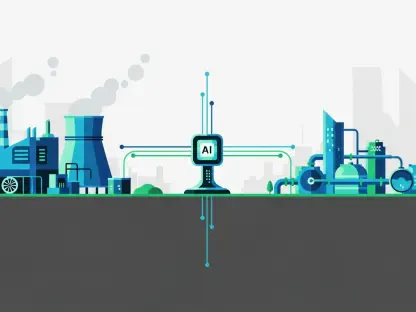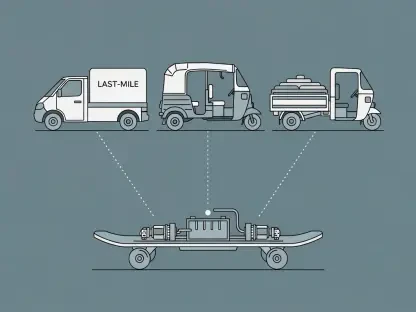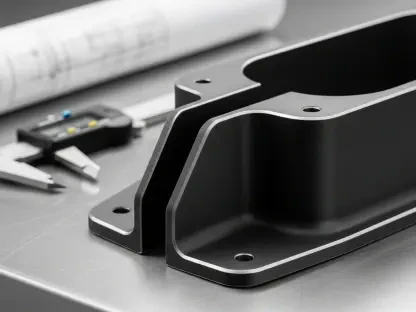Meet Kwame Zaire, a seasoned expert in manufacturing with a deep focus on electronics, equipment, and production management. With a passion for predictive maintenance, quality, and safety, Kwame brings a unique perspective to the evolving landscape of sustainable practices in the packaging industry. In this interview, we explore his insights on the importance of sustainability, the power of circular systems, the impact of global mergers, innovative solutions in fiber-based packaging, and the ambitious journey toward net-zero goals. Join us as we dive into how these elements are shaping the future of manufacturing and packaging on a global scale.
How did your journey in manufacturing lead you to focus on sustainability within the packaging industry?
My career in manufacturing, particularly in electronics and equipment, gave me a front-row seat to how production processes impact both efficiency and the environment. Early on, I realized that sustainability isn’t just a buzzword—it’s a necessity for long-term success. Working in production management, I saw how wasteful practices could hurt both the bottom line and the planet. That pushed me to dive into sustainable solutions, especially in packaging, where materials like paper and fiber offer incredible potential for reducing waste. I’m driven by the challenge of balancing quality and safety with environmental responsibility, and packaging is a space where innovation can make a huge difference.
Why do you think sustainability has become such a critical priority for companies in the packaging sector?
Sustainability matters because it’s no longer optional—customers, regulators, and even investors are demanding it. In the packaging sector, we’re dealing with materials that touch every part of the supply chain, from raw resources to end consumers. Companies that prioritize sustainability can reduce waste, cut costs, and build trust with stakeholders. It’s also about responsibility; with the scale of production in this industry, we have the power to either harm or heal the environment. Leading in sustainability means setting a standard that influences entire value chains, pushing everyone toward greener practices.
Can you explain what circularity means in the context of packaging and why it’s so important?
Circularity in packaging is all about keeping materials in use for as long as possible. It’s designing products so they can be recycled or reused rather than ending up in landfills. For instance, using renewable resources like responsibly sourced fiber and ensuring that post-consumer materials are collected and turned into new products creates a closed-loop system. This is crucial because it minimizes waste and reduces the need for virgin resources. It’s a win-win—less environmental impact and often lower costs for businesses over time. Circularity is the backbone of a truly sustainable industry.
How do global partnerships or mergers influence the ability to scale sustainable practices in packaging?
Global partnerships and mergers are game-changers for scaling sustainability. When companies combine forces, they bring together diverse expertise, resources, and regional insights. This allows for sharing best practices—like advanced recycling techniques from one market being adapted to another. It also means greater investment power for things like renewable energy projects or innovative technologies. On the flip side, it’s not without challenges; aligning different operational cultures and navigating varied regulations can be tough. But overall, the expanded footprint and shared vision often accelerate progress toward sustainable goals.
What role does innovation play in transforming traditional packaging materials into more sustainable options?
Innovation is everything when it comes to making packaging more sustainable. Take fiber-based solutions, for example—corrugated or paper-based materials are already highly recyclable, but new designs are pushing the boundaries further. We’re seeing alternatives to plastic, like paperboard carriers for beverages or pallet wraps that replace stretch film. These innovations maintain strength and functionality while being fully recyclable. They help major brands cut down on single-use plastics without sacrificing efficiency. It’s about rethinking how we protect products while ensuring materials can come back into the system again and again.
Can you share some of the key strategies or investments that are helping the industry move toward a net-zero future?
Moving toward net-zero requires a multi-pronged approach. One big strategy is investing in renewable energy—think biomass boilers or solar farms that power manufacturing facilities. Another is upgrading equipment for better energy efficiency, which cuts emissions without slowing down production. Then there’s innovation in processes, like testing hydrogen as a fuel source in mills. These steps aren’t just about reducing our own footprint; they support customers’ climate goals too. The challenge is balancing upfront costs with long-term gains, but with a clear roadmap, these investments are paving the way for a cleaner future.
What are some of the biggest hurdles in scaling sustainable packaging solutions across different global markets?
Scaling sustainable packaging globally is tricky because no two markets are the same. Regulations differ—some regions have strict recycling mandates, while others lack infrastructure altogether. Customer expectations vary too; what’s a priority in one country might not resonate in another. Then there’s the issue of supply chain logistics—ensuring consistent quality while adapting to local needs is a constant balancing act. Overcoming these hurdles means investing in flexible operations, building strong partnerships, and staying customer-focused. It’s about delivering sustainability at scale without losing sight of local realities.
What is your forecast for the future of sustainable packaging over the next decade?
I’m optimistic about the next decade for sustainable packaging. I think we’ll see even more breakthroughs in materials—think bio-based coatings or enhanced fiber solutions that rival plastics in durability. Technology will play a bigger role too, with smarter recycling systems and data-driven supply chains optimizing circularity. Regulatory pressure will likely intensify, pushing companies to innovate faster. At the same time, consumer demand for eco-friendly options will keep growing, forcing the industry to prioritize transparency. It’s an exciting time; I believe we’re on the cusp of packaging becoming a true driver of environmental progress rather than a problem to solve.









